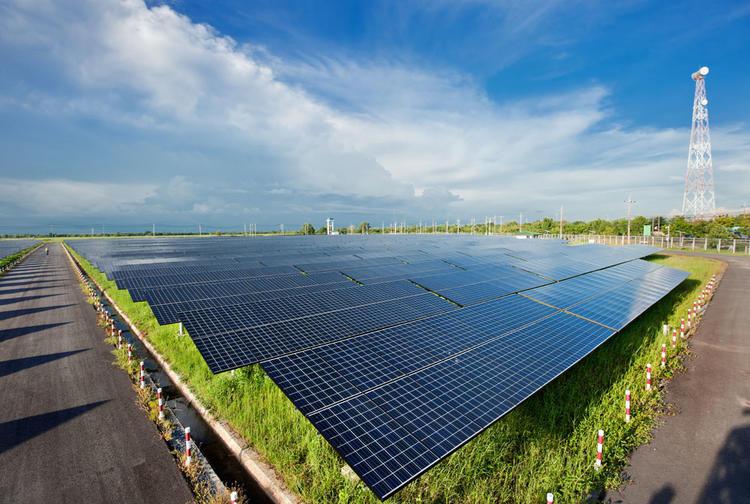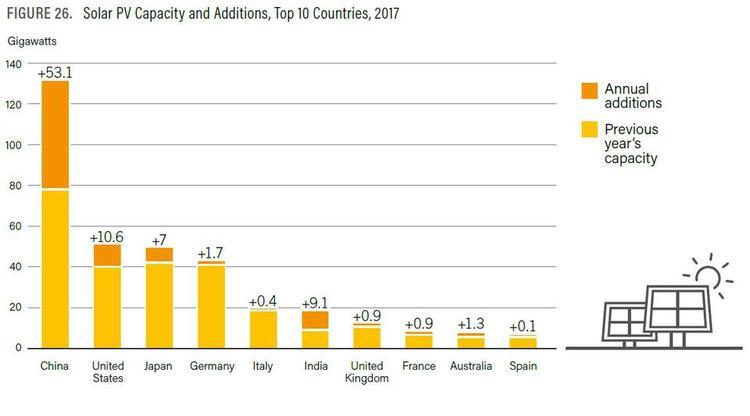According to Reuters, in January this year, Trump announced in the opposition of most PV industry companies that the import panel was levied a tariff of up to 30%, causing a strong domestic shock. To date, more than $2.5 billion in large-scale PV project investments and thousands of jobs have been cancelled, and the expected new projects have been cut in half. This is undoubtedly a major blow to the rapidly growing photovoltaic industry. According to the US Solar Energy Industry Association, the total investment in solar power plant installation projects completed by solar developers last year reached 6.8 billion US dollars. The US PV industry employs more than 250,000 people, more than three times the number of employees in the coal industry. But behind the booming PV industry is mainly due to government subsidies and lower panel costs from China. The combination of the two makes the new energy industry unbeaten in competition for traditional energy sources such as coal and natural gas. Suniva, a US-based photovoltaic panel maker, has filed for bankruptcy, prompting the US government to reconsider tariff increases on photovoltaic panels. On June 1, the Chinese government decided to substantially reduce subsidies to the photovoltaic power generation industry and suspended local quota requirements for new projects until further notice. The government claims that this move is to “promote the sustainable development of the solar energy industry, enhance its development quality and rapidly reduce subsidy costs.†After the reduction, the subsidies for the photovoltaic power industry have shrunk by up to 5 cents per kWh of subsidies of up to 0.1 yuan. This is undoubtedly a painful blow to the Chinese PV industry with a cumulative installed capacity of 77.42 MW. According to the South China Morning Post, China's photovoltaic industry has jointly urged the government to postpone the implementation of this policy. They believe that this policy will cause more impact on the photovoltaic power industry, which has been struggling on the edge of the loss line. According to Xinhuanet, China's photovoltaic industry has increased its power generation by 57.1% in 2017, becoming the world's largest solar power producer, but the total power generation from the photovoltaic industry still accounts for only 1.7% of the country's total power generation. Growth of the world's top ten photovoltaic power generation countries China's photovoltaic power generation companies have accumulated huge debts in order to compete with traditional energy sources. They estimate that China's PV industry still needs 3 to 5 years of government support. Now, the rapid growth of China's photovoltaic industry may be greatly curbed. China is not the first country to cancel or cut subsidies to the photovoltaic industry. Previous European countries such as Germany and Spain also cut subsidies. But unlike China, where energy demand is no longer significantly increasing, China's energy demand is growing rapidly with rapid economic growth. The serious pollution caused by electricity from traditional energy sources is obvious to all. The National Energy Administration had previously planned to invest an additional $361 billion in renewable energy by 2020. The National Energy Administration said it had met with representatives from the photovoltaic industry on Wednesday and promised to allocate new energy industry construction requirements as soon as possible, but it will not increase subsidies or approve new PV projects that require any subsidies. The Ministry of Commerce has struggled to spend billions of dollars on subsidies for new projects. The analysis pointed out that China's substantial cuts in subsidies may be due to the fact that the US has imposed a 30% tariff on solar power equipment exported to China for at least four years. Protective tariffs will benefit a small number of US PV companies, and China's cuts in subsidies will make it lose its presence in China. China's domestic excess supply may stimulate these PV companies to export solar panels to other countries at low prices. But more losses may be inevitable. Reuters reported that market research firm IHS Markit is preparing to cut its forecast for new installed capacity of photovoltaic power generation this year by 10,000 megawatts, or up to 9%. According to the company, China accounts for half of the global photovoltaic power generation market, and its forecast for China may be reduced by up to 17,000 megawatts. This is not a good result for global environmental protection and sustainable development. Topscien Instrument(Ningbo China)Co.,LTD , https://www.centrifugesupply.com

The United States increases tariffs, China cuts subsidies, and the photovoltaic industry may be hit hard.
Abstract According to Reuters, Trump announced in January this year, the panel imposed import tariffs of up to 30% in most of the photovoltaic industry's opposition, the United States caused a strong shock. To date, more than $2.5 billion in large-scale PV project investments and thousands of jobs have been...